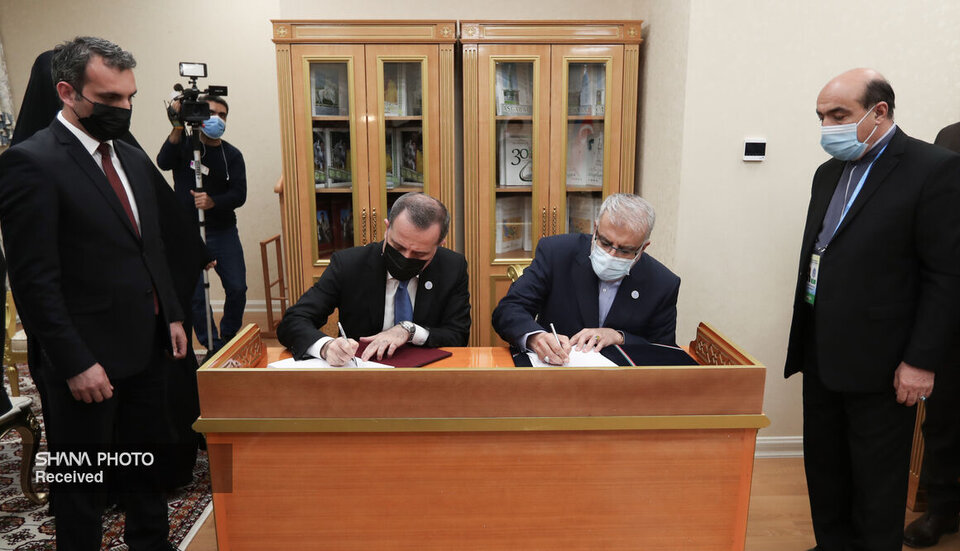Turkmenistan has two gas export pipelines to Iran: one is the 200-km Korpeje–Kordkuy pipeline and the other is the Dauletabad–Sarakhs pipeline.
November 28, 2021 may be considered the starting point for the revival of Iran's energy diplomacy after the five-year gas dispute between Iran and Turkmenistan and in coincidence with the cessation of gas imports from Turkmenistan, following the bilateral meeting between Iranian President Ebrahim Raisi and Ilham Aliyev, President of Republic of Azerbaijan, on the sidelines of the ECO Summit, which led to an agreement between the two neighbors for tripartite gas swap between Turkmenistan, Iran and Republic of Azerbaijan that was signed by the oil ministers of the two countries.
The purpose of the agreement was to import 1.5 to 2 bcm of gas from Turkmenistan annually from the north-east (Sarakhs region) and to deliver Iranian gas to Republic of Azerbaijan from the north-west of the country (Astara). According to the agreement, Iran takes a certain amount of the imported gas as swap fee; in effect, this method is independent of any financial relations between the countries involved in the deal.
Following the agreement and on the sidelines of the visit of Iranian Minister of Petroleum Javad Owji to Republic of Azerbaijan, another agreement was struck with the aim of doubling the volume of gas swaps. According to Minister Owji, Iran has the capacity to triple or even quadruple the current volume of gas swap between Republic of Azerbaijan and Turkmenistan. This could be considered the next important step towards the revival of energy diplomacy and a precursor for the steps to come.
Previously, Hassan Rouhani, the former president of Iran, during his trip to Ashgabat in 2018, had discussed with his Turkmen counterpart, implementation of gas swap contracts for Turkmenistan through Iran, possibly to Armenia or Republic of Azerbaijan, but the negotiations between the two never went beyond any further than preliminary stages.
The swap deal is important for Iran for several reasons: chief among them is to contribute to the stability of gas supply in the northern provinces. This volume is an aid to supply part of the gas of the five provinces of Khorasan Razavi, North Khorasan, South Khorasan, Guilan and Semnan, and is more economically viable for the country; but its other advantage is to help expand and consolidate the country's relations with neighboring countries and revive Iran's energy diplomacy. On the other hand, considering the ongoing tension between Russia and Ukraine, the European Union is seeking to wean itself off Russian gas and find replacement for it, and considering the fact that Europe has been looking for Turkmen gas for years, Republic of Azerbaijan is in a good position for this replacement.
Regarding the fact that Iran needs energy conservation, enhanced energy efficiency and full utilization of its gas reserves in order to control its devastating domestic consumption and export any potential surplus gas to Europe, this swap is a positive step towards paving the way for Iran to win a share in the European market and the suspension of the Trans-Caspian project in the shadow of the expansion of ties between the country and its neighbors.
In 2021, Republic of Azerbaijan exported 8.2 bcm of natural gas to Europe, and according to the plan, this amount is expected to increase to 9.1 bcm in 2022, and in 2023, 11 bcm of natural gas is expected to be exported to European countries.
In 2004, Iran signed a gas swap agreement with the Republic of Azerbaijan, according to which Iran used the gas received from Republic of Azerbaijan in Astara and delivered its own gas to Nakhchivan.
By Mahdia Abolhasani
Energy Expert
Courtesy of Iran Petroleum


Your Comment